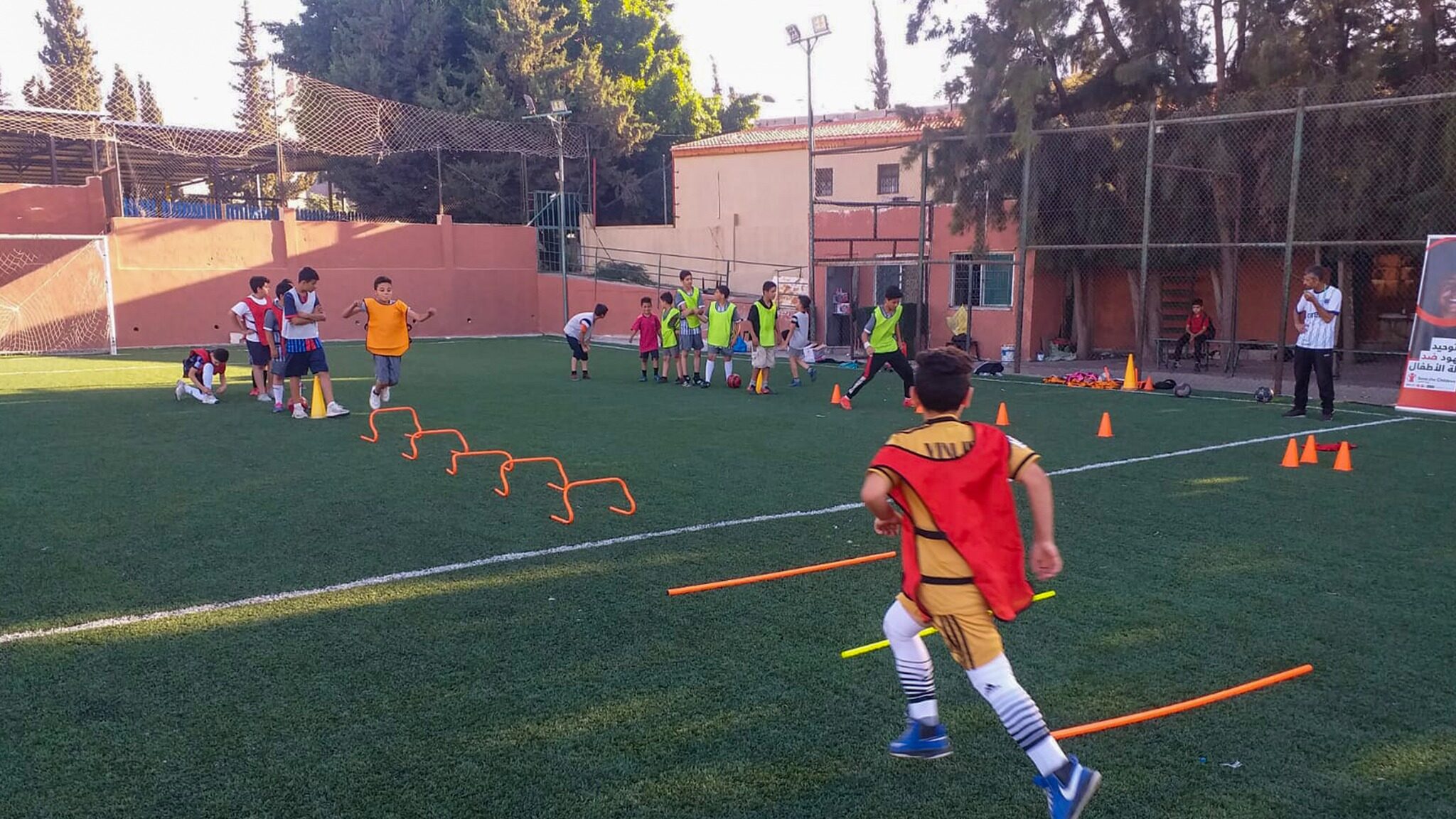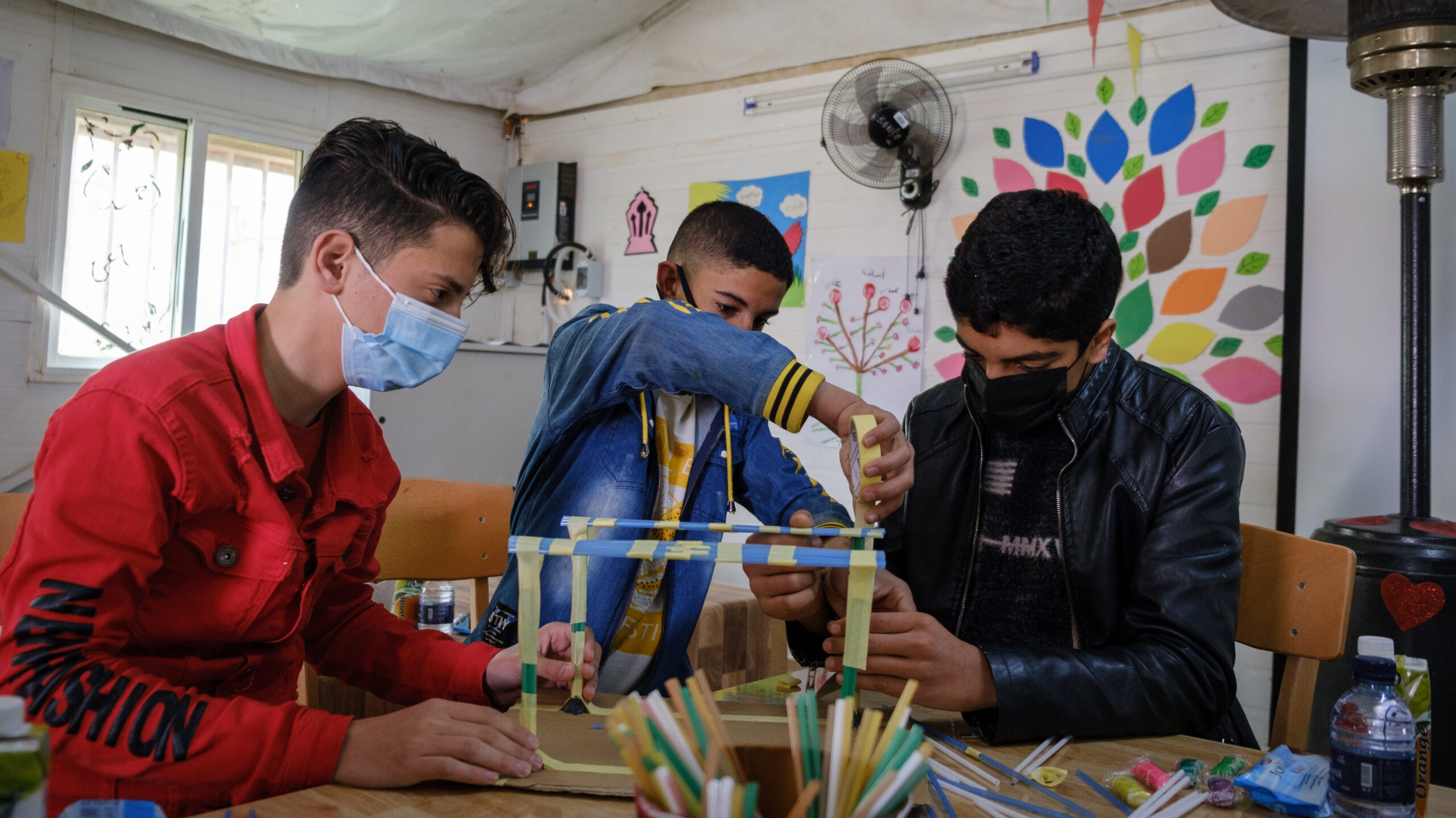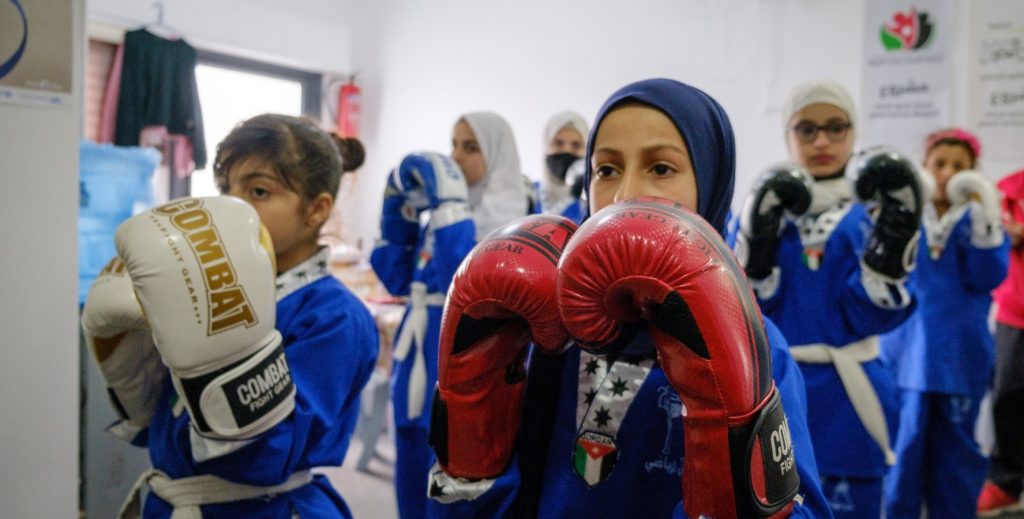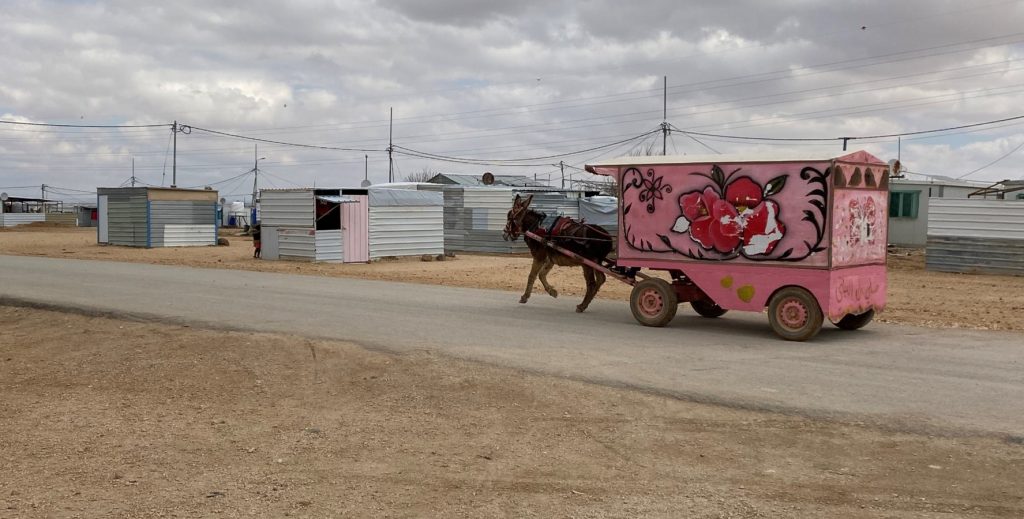Case management & Talent hubs
Save the Children’s child protection approach has a strong base in its case management, both for children and their parents. Mohammad: “The case management is the antenna of all our interventions. On the basis of the home visits, the case manager can study the family situations, identifying children’s and families’ needs. It gives us the information to draw up a childcare plan, support children to go to school and to refer children or parents to either Save the Children colleagues or specialized, external help organizations.”
Alla works for Rowad, a partner NGO of the WNCB programme in Jordan, as a case manager. The case managers talk with children that are working and the business owners to target them. After that, they categorize the child into an age group, from 7 till 17. They bring all the information to the office and the family is contacted. The case managers also visit the family at home and identify the needs of the family and child. A case and care plan for the children is made to refer the child to other projects or NGOs.
Alla: “We try to resolve the issues or problems that are the cause of child labour. And take the children out of work and bring them back to school. If the mother can work, we invite them to our center for skill trainings, so that they can start a shop from home, for instance. This also gives them pride and confidence.”
Mohammad continues: “Through the case management, all aspects of the child and family are looked at. Mental health issues, health issues, legal issues, education. We provide these services to children that are engaged in child labour and children that are at risk of becoming involved in labour. Obviously, we focus on those who are out of school. They are potential victims. We organize our case management by hiring qualified people and sending them into the areas. They go from door to door.”
Talent hubs: a comfortable zone for children
Another principal element in Save the Children’s approach against child labour is to be found in the talent hubs. Mohammad: “With the lack of access to formal education, due to the absence of schools and teachers, for so many refugee children as well as poor Jordanians, we chose to develop talent hubs. We now have one in Zaatari, and in East Amman we have set up another one, in partnership with JOHUD, a local partner.”


The talent hubs are targeted at children from 6 to 17 years that are in any way connected to (the risk of) child labour. The talent hubs provide various activities, including psychosocial activities, life skills teaching, and teaching and practicing IT skills, sports, and arts. Mohammad has been involved in the talent hub development from the beginning, and he is enthusiastic whenever he starts speaking about these safe spaces. “It is in these hubs that the children can develop their talents and learn new things. But, moreover, it is also a place where they can express their feelings, find the right challenges, and hopes. With competent staff in place in these talent hubs, we can offer opportunities, healing sessions through art and sports, and empower them in finding new ways.”
“The first aim is always to try and get these children to school”, he adds. “However, if that is impossible, at the very least, we try to decrease the number of working hours of the children. In the talent hubs they can play, learn, share their opinions, and start thinking about a better future. At the same time, it is in these same places that many of our case managers work on a regular basis. From here they can address many of the key issues, for example, by referring children or family members to civil society organizations or any other help organizations. Our case managers have a map, which includes all local community-based organizations in East Amman and al social service providers in Zaatari.”
So, what does a talent hub look like? Mohammad answers: “In East Amman, the talent hub is actually a building. It provides a comfortable zone for children. There is a library, a cinema, a music area, a space for interactive activities and various other rooms for different activities. Inside Zaatari, the idea is the same, but there we have three big caravans that we use as a talent hub.”


“The talent hubs are advertised mainly through our mobilization and case management activities. The case managers and community mobilisers are the ones that do the home visits during which they introduce our activities. But we are also part of some international child protection groups in which international and national NGO’s come together. We introduce our activities there and we tell our partner organizations about our talent centres. And, of course, we publish announcements on our activities through our social media.”
Karim did not go to school. He learned about the WNCB programme through his friends in the neighbourhood. Karim received guidance, support and participated in empowerment sessions, and his mother also participated. With the support of the programme, Karim was able to attend school again.”
Impact and change
When speaking about the impact of four years WNCB in Jordan, Mohammad points out how the talent hubs have become trusted centres of social collaboration. “We are in our fourth year now, and we are clearly recognizing the positive impact. By now, we have reached 1000 children or more through our talent hubs. However, it is not only the children that benefit. The talent hubs are part of a larger cycle of social work in which we work together with many other organizations. Through our talent hubs we also invite families for positive parenting sessions. These sessions teach the parents about the development stages of children, how they can have better communications with their children, and how they can build a trustful relationship with their children and more mutual understanding. Some parents really do not know what children need at different ages, and what they face in the streets, on the fields, in their work. This is very important.”
“We have been able to build trust within the communities”, he continues. “Children come to our centres, and we support the community. But many people from the community support us too, for example by sending other people to come to our centres. Many children have returned to school, and even more children have reduced their working hours.”

